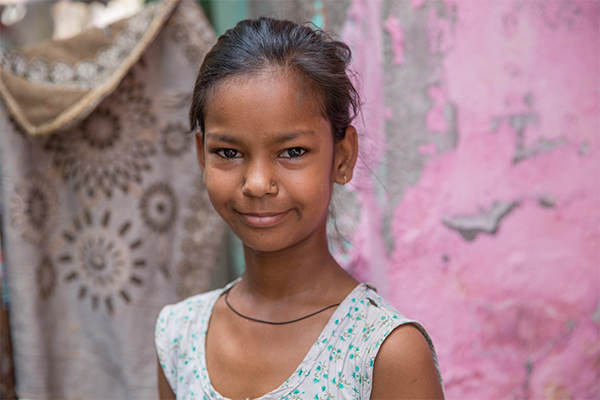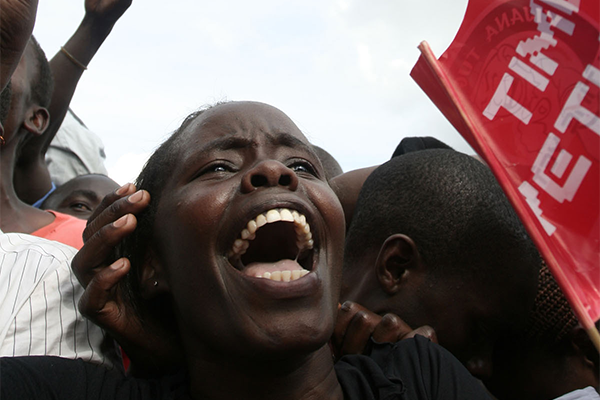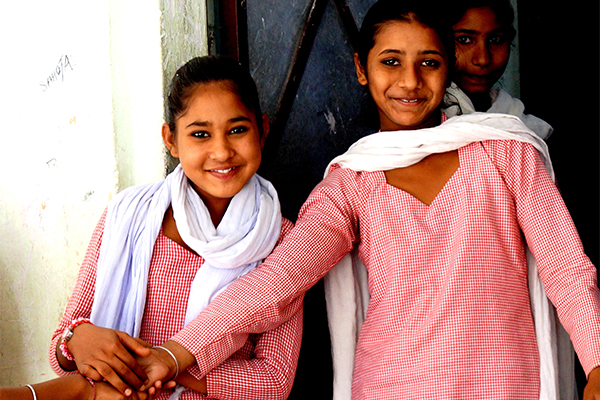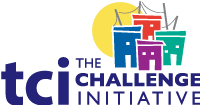AYSRH Toolkit
Demand Generation for Youth- Home
- Help and Support
- Close
- Toolkits
- Global Toolkit
- AYSRH Toolkit
- Hub Toolkits
- Core High-Impact Practices
- Gender Essentials Mini Course
- Close
- Resource Collection
- Community of Practice
- Coaching
- Log In/Register
- My Profile
- English
SBC: Linking Youth to SRH Information and Services
What is it?
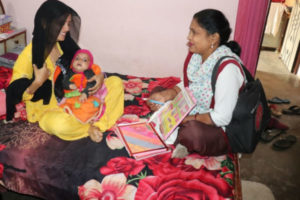 Social and behavior change (SBC) is an approach that promotes and facilitates changes in knowledge, attitudes, norms, beliefs and behaviors. This approach is very closely related to Community Gatekeepers. The Community Gatekeeper approach promotes a safe and supportive environment for adolescent and youth sexual and reproductive health (ASYRH), while TCI is using SBC to focus more so on strategies that specifically target youth with SRH information and promote linkages to quality contraceptive services. The goal is to improve youth’s knowledge and attitudes about their SRH and ultimately lead to their use of contraceptives when they become sexually active.
Social and behavior change (SBC) is an approach that promotes and facilitates changes in knowledge, attitudes, norms, beliefs and behaviors. This approach is very closely related to Community Gatekeepers. The Community Gatekeeper approach promotes a safe and supportive environment for adolescent and youth sexual and reproductive health (ASYRH), while TCI is using SBC to focus more so on strategies that specifically target youth with SRH information and promote linkages to quality contraceptive services. The goal is to improve youth’s knowledge and attitudes about their SRH and ultimately lead to their use of contraceptives when they become sexually active.
The proven approaches that TCI helps support in this area are interpersonal communication (IPC) (specifically through household visits by community health workers), social mobilization activities, mid-media activities such as drama and theater group performances and mass media campaigns. These same approaches can be used to generate demand for services among youth as well as promote a more informed and supportive social environment.
What Are the Benefits?
- Mass media has been found to prompt dialogue at the household level to normalize contraceptive use, introduce specific methods and encourage spousal/partner communication.
- Interpersonal communication, social mobilization and mid-media help deepen discussions on family planning, overcome misinformation barriers about specific methods and social stigma, and support referrals to services.
How to Implement?
The steps for implementing each proven approach can be found in the respective hub toolkit. As a result, we focus here on overarching considerations when designing and implementing an SBC intervention. Start with a proven planning tool, such as the P Process. The Urban Adolescent SRH SBCC Implementation Kit walks you through the process. Engage youth throughout the five steps of the P Process:
Step 1: Inquire
- Begin to understand the extent of the problem.
- Identify your audiences. Which segments will you focus on and why?
- Uncover your intended audiences’ barriers to behavior change. These can be economic, social, structural, cultural or educational—or something else entirely.
- Identify facilitating factors to behavior change, including potential messengers and media.
Step 2: Design your strategy
Design your strategy based on a social and behavioral science theory or framework. The strategy will include communication objectives, audience segmentation, program approaches, channel recommendations, a workplan and a monitoring and evaluation plan.
Step 3: Create and test
- Develop the program’s communication products. These could include mass media and print materials, participatory processes, trainings and more. In this step you will combine art and science–the creative and artistic vision needed to move audiences and inspire them to change will meet the analysis, theory and strategic decisions of Steps 1 and 2. You will also test your ideas and designs with your intended audience(s) to ensure that the messages are clear and actionable.
Step 4: Mobilize and monitor
Implement your program and monitor its progress. You and your partners will distribute your products and conduct activities as described by the strategic plan developed in Step 2. Designated staff will monitor activities to make sure distribution and roll-out proceed as planned and potential problems are identified and addressed as quickly as possible.
|
Interpersonal Communication (IPC) |
In the case of TCI, interpersonal communication often takes place through home visits that community health workers (CHWs) make to youth and their families. The CHW provides counseling at repeat sessions and offers referrals to local youth-friendly health services, accompanying youth clients where needed. TCIHC coaches urban Accredited Social Health Activists (ASHAs) on tailored messages and counseling techniques to be used with the following groups: ● First-time mothers and fathers ● Women 7 to 8 months pregnant or immediately postpartum ● Decision-makers in the family, such as in-laws and parents In Nigeria, Community Health Extension Workers and non-clinical providers were trained on IPC and and counseling skills as part of the Nigeria Urban Health Initiative (NURHI). Training was supplemented with a mobile app for refresher trainings. This approach has been continued under TCI. |
|
Social mobilization |
Prior community mobilization through community health workers/social mobilizers/volunteers/youth groups or other means is critical to the success of in-reach and outreach services. Experience shows that without a community mobilization component, turnout for in-reach activities is limited and outreach efforts are less successful. Increasing the knowledge of potential family planning clients and creating an atmosphere that promotes family planning ensures greater demand and uptake of services. Refer to the Nigeria ‘Get it Together’ Youth Social Mobilization: from Strategy Design to Implementation for more information. TCI makes sure that community health workers and social mobilizers refer potential clients to services using referrals/go cards/coupons, depending on the geography. This helps with monitoring these activities. In addition, TCI East Africa uses sentinel surveillance sites – a small number of health facilities – to collect data on clients’ source of referrals; CHWs are among the top reported. |
|
Mid-media |
Community theater and drama groups are actively engaged to inform youth and the wider community about SRH issues in an entertaining way while providing referrals to services. This approach is particularly used in East Africa and Nigeria. In India, city officials supported by TCIHC commemorated Adolescent Health Days at select urban primary health centers to drive access and acceptance of health services among youth. A total of 75 adolescents participated in this event, including 16 boys and 33 girls from a younger cohort (15-19 years of age). This half-day event, named #Haseen Sapne (“chit-chat”), offered a variety of infotainment activities like a gaming zone, information area, nutrition corner, male/female counseling corner, and talk show with an ARSH doctor/counselor. In addition, September 2018 a high-intensity mid-media campaign was launched in the five AYSRH pilot cities of Uttar Pradesh: Allahabad, Varanasi, Gorakhpur, Firozabad and Saharanpur. Using various media approaches including IVR (missed call and SMS) and street theater, it reached around 130,000 young married couples with messages on the benefits of family planning (protection from unwanted pregnancy) and information about quality FP services at government health facilities. |
|
Mass media |
Building off of the successful brand of NURHI’s “Get It Together” campaign, TCI works with States to adapt and air TV and radio spots. Francophone West Africa launched its “Je choisis” umbrella communication campaign in Abomey-Calavi and UCOZ on World Contraception Day (September 26, 2019). It is currently producing two radio spots to encourage men and women to choose FP and inform the public of available FP services. The messages in the radio spots will also be converted into posters featuring local figures from each city. In Nigeria and East Africa, TCI supports local government and community stakeholders to leverage community radio programs to get messages out about family planning and AYSRH. In India, TCIHC designed a mass media campaign with state governments, to be launched later in 2020. |
Step 5: Evaluate and evolve
Conduct activities to determine how well your program achieved its objectives and identify any unintended consequences. You want to know why your program was or was not effective and whether or not it had its intended effects on the knowledge, attitudes or behaviors of your intended audiences. You will also use the lessons learned to influence future programming and funding allocations.
TCI is collecting household level surveys in a sample of its locations to assess the impact of these messages on women of reproductive age, and especially youth.
What Is the Evidence?
- Overall exposure to mass media messages was significantly related to contraceptive uptake in Nigeria (radio), Senegal (radio for women and TV for men), India (TV) and Kenya (radio).
TCI APP USERS PLEASE NOTE
You will only receive CERTIFICATES by email – when earning a score above 80% – and will not be able to view or print a certificate PDF from the TCI app.
Test Your Knowledge
Earn a Certificate
Quiz Summary
0 of 5 Questions completed
Questions:
Information
You have already completed the quiz before. Hence you can not start it again.
Quiz is loading…
You must sign in or sign up to start the quiz.
You must first complete the following:
Results
Results
0 of 5 Questions answered correctly
Your time:
Time has elapsed
You have reached 0 of 0 point(s), (0)
Earned Point(s): 0 of 0, (0)
0 Essay(s) Pending (Possible Point(s): 0)
Categories
- Not categorized 0%
- 1
- 2
- 3
- 4
- 5
- Current
- Review
- Answered
- Correct
- Incorrect
-
Question 1 of 5
1. Question
Social and behavior change (SBC) is an approach that promotes and facilitates changes in knowledge, attitudes, norms, beliefs and behaviors.
CorrectIncorrect -
Question 2 of 5
2. Question
Benefits of SBC include:
CorrectIncorrect -
Question 3 of 5
3. Question
The five steps of the P-Process IN ORDER are:
CorrectIncorrect -
Question 4 of 5
4. Question
How useful did you find the information and/or tools presented on this page? Please write your response in the box below using one of the following phrases: Very useful, Useful, Somewhat useful, Not useful.
Feel free to comment on why you made that choice.
-
This response will be awarded full points automatically, but it can be reviewed and adjusted after submission.
Grading can be reviewed and adjusted.Grading can be reviewed and adjusted. -
-
Question 5 of 5
5. Question
How do you intend to use the information reviewed and/or tools that you accessed?
-
This response will be awarded full points automatically, but it can be reviewed and adjusted after submission.
Grading can be reviewed and adjusted.Grading can be reviewed and adjusted. -
Approaches: Demand Generation for Youth
Helpful Tips
- Integrate approaches with national health strategies: With no direct integration, once the funding runs out, the government may not be in a position to simply take over the project and keep running it. However, when new initiatives are deliberately integrated into existing structures and service models, they can create change from the inside out, and the government is able to more easily adopt new practices.
- Develop ways of mainstreaming activities: Find openings in existing systems and structures where SBC activities can be incorporated; this will allow for greater sustainability. For example, SRH activities can be integrated into school curricula, community events, etc.
Challenges
- How do you provide contraceptive services to someone who legally cannot give consent? In Nigeria, the age of consent is legally 18, but there is recent controversy over a clause in the constitution that says a person is legally allowed to vote if they are 18 OR if they are married, so technically someone who is under 18 and married is considered a legal adult and can consent. Educating and informing the parents is key to ensuring that youth are allowed to consent to their own health care and receive family planning services, and also to ensure that parents understand the importance of family planning and are able to consent on their children’s behalf as necessary.
- The costs of media production and airtime remain a challenge. However, utilizing community-level platforms and structures makes these activities cost-effective given their extensive reach.
Resources
- Urban Adolescent SRH SBCC Implementation Kit, Health Communication Capacity Collaborative (HC3)
- The GREAT Scalable Toolkit, Pathfinder International – Flipbooks, Activity Cards, Radio Discussion Guide, Community Game (English | French | Portuguese)
- Go Girls! Community-based Life Skills for Girls Training Manual, Center for Communication Programs
References
See a listing of all AYSRH references.


